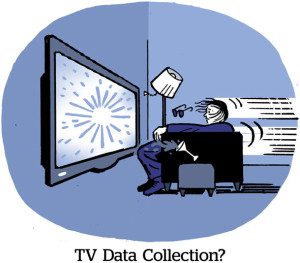Change is hard for a company like Nielsen, which has been around so long it even predates the first publicly available television sets.
(No, really! Nielsen was first incorporated more than 100 years ago in 1923. The first public demonstration of television technology wasn’t performed until 1925 in London, featuring a horrifying ventriloquist dummy named “Stooky Bill.”)
Anyway, as a TV measurement provider that was founded before the dawn of television, Nielsen is fighting for its place in the new media landscape.
“There are systems that are built to do one thing – for example, measure linear – and now streaming comes up,” Nielsen’s chief product officer, Deirdre Thomas, tells me.
Streaming was growing before 2020, but it got a serious shot in the arm during the pandemic, paving the way for increased interest in and adoption of alternative measurement currencies.
In 2021, the Media Rating Council stripped Nielsen of its accreditation for local and national TV measurement after revelations that the company had undercounted TV audiences by up to 6% during the pandemic.
Nielsen immediately worked to regain its accreditation, which it did for national TV ratings in April 2023.
But according to Thomas, even if there hadn’t been “a public push for innovation” driven by its newfound competitors, Nielsen would still have invested to improve its streaming measurement capabilities, Thomas says.
And now, she says, Nielsen has managed to get ahead of alternative currency providers in a few key areas, including live streaming measurement.
It’s all live to me
Earlier this month, the MRC not only renewed Nielsen’s national panel measurement accreditation, but also approved the integration of first-party streaming data into the company’s existing panel.
After Nielsen briefly went live with Amazon Prime’s Thursday Night Football ratings last year, “the MRC had feedback on how to improve the methodology,” Thomas says. This feedback, (which Nielsen did not elaborate on beyond saying it helped to make their methodology more granular) has since been incorporated into the product – thus, the new accreditation.
The comingling of first-party streaming data and “persons-level” panel measurement (Nielsen’s term for granular audience targeting) has its benefits.
Because viewing is so fragmented, big data helps to provide better scale and overall coverage that panel-based measurement simply can’t achieve on its own. But representative panels can also correct for noise that’s sometimes found in those data sets – so combining both methodologies, the way that Nielsen now does, makes the end result stronger and more accurate, Thomas says.
Meanwhile, Nielsen already has a lot of experience with live TV measurement. Watching live streaming and live TV are basically equivalent activities from a consumer perspective.
“It’s live. It’s at a scheduled time. The ad load is the same for everybody,” says Thomas. “Aside from the fact that you’re watching a streaming platform, it looks just like television.”
Video is video
Thomas dropped me a few hints that Nielsen is working on separating out ad-supported and subscriber-only viewership for streaming platforms, although she can’t share the specifics just yet.
But, more importantly, Thomas says she wants Nielsen and the industry at large not to think of streaming and linear – or any kind of video content, for that matter – as separate from one another.
“People watch that stuff interchangeably,” she says, sharing a tidbit she heard at a recent conference. Apparently, the number of YouTube Shorts viewed on connected TVs has doubled year over year.
Makes sense. If not for the YouTube app on my smart TV, how else would I watch clips from that recent “Doctor Who” episode with Stooky Bill in it? (By watching the whole episode again? Who has time for that?)
Questions? Comments? Concerns? You know where to find me: [email protected].
















